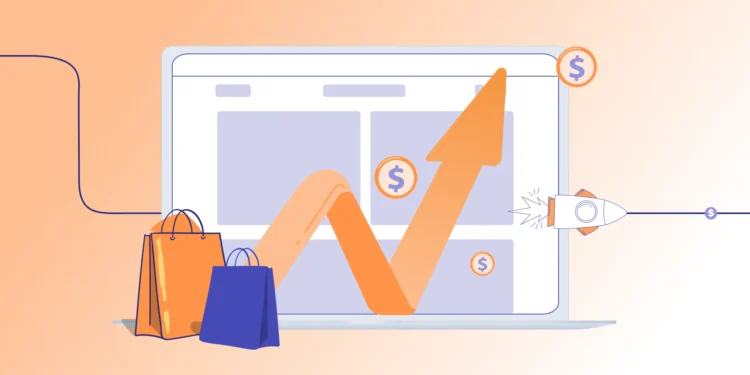In the ever-evolving world of eCommerce, staying ahead of the competition requires more than just having an online store. It demands a dynamic blend of technology, user experience, marketing, customer service, and innovation. As more consumers shift to online shopping, brands must continuously adapt their strategies to improve visibility, build trust, and increase conversions. The truth is, even small changes can yield massive results if executed with consistency and precision.
In this guide, we’ll dive deep into 100+ strategies designed specifically to boost eCommerce sales, categorized into organized groups with 10 detailed strategies in each. These aren’t just tips — they’re actionable, data-backed tactics that top-performing stores use daily to drive more traffic, improve conversions, and scale profitably. Whether you’re launching your first online shop or managing a high-volume eCommerce business, these strategies will help you drive growth and maximize revenue.

Website Optimization & User Experience (UX)
Your website is the first point of contact between your brand and your potential customer. If your eCommerce store doesn’t deliver an intuitive, fast, and engaging experience, you risk losing sales before they begin. Optimizing your website for performance and usability is the foundation of every successful eCommerce growth strategy. From navigation to checkout, every element should be designed to make the customer journey seamless and enjoyable.
1. Optimize Page Speed for Faster Load Times
A delay of even one second in page loading can drastically increase bounce rates. Use tools like Google PageSpeed Insights or GTMetrix to analyze and improve loading times. Compress images, enable browser caching, and minimize scripts to deliver a faster experience. A speed-optimized site boosts SEO rankings and increases the likelihood of conversions. The faster your store, the higher your customer retention.
2. Implement Mobile-Responsive Design
Over 60% of online shopping is done via smartphones. If your site isn’t responsive, you’re automatically losing a majority of your potential audience. Invest in mobile-first design with clickable buttons, thumb-friendly navigation, and fast mobile loading. Use tools like Google’s Mobile-Friendly Test to check your design. A seamless mobile experience is non-negotiable in today’s eCommerce world.
3. Simplify Site Navigation and Menus
Complex site structures can confuse shoppers and lead to lost sales. Make sure your main menu is clean, categorized by product types, and easy to explore. Use breadcrumb navigation and search filters to help users find what they want quickly. Highlight best-sellers, trending items, or special deals to reduce the path to purchase. Good navigation keeps visitors engaged and leads them toward a sale.
4. Use High-Quality Product Images and Videos
Customers can’t touch or try your product, so visuals are everything. Upload multiple high-resolution images with zoom capabilities and 360-degree views. Incorporate product videos to showcase real-life usage or unboxing experiences. This builds buyer confidence and reduces return rates. Quality visuals directly impact conversion rates and customer satisfaction.
5. Write Compelling and Informative Product Descriptions
Avoid generic descriptions that don’t speak to the buyer’s needs. Use clear language to highlight features, benefits, materials, dimensions, and care instructions. Incorporate emotional triggers and keywords for SEO while staying concise and engaging. Descriptions should help shoppers visualize the product in their lives. A well-written description often seals the deal.
6. Add Trust Seals and Security Badges
Online shoppers are wary of scams and identity theft. Include SSL certificates, “Verified by Visa” badges, or other trusted seals on your site. Show secure payment logos and communicate privacy policy transparency. Trust indicators reduce anxiety and help convert hesitant buyers. Even a small trust badge can dramatically boost your checkout rates.
7. Streamline the Checkout Process
Cart abandonment is often caused by complex checkout systems. Keep forms short, allow guest checkout, auto-fill address fields, and offer progress indicators. Remove distractions like popups or unnecessary links during the process. A quick and smooth checkout boosts conversions and creates a positive buyer experience. The goal is minimal clicks from cart to confirmation.
8. Add Multiple Payment Options
Different customers prefer different payment methods. Offer a mix of credit/debit cards, PayPal, Apple Pay, Google Pay, and buy-now-pay-later solutions like Klarna or Afterpay. Global stores should also consider local payment gateways. Providing choice caters to more buyers and increases the chances of completed purchases.
9. Optimize Your Search Bar with Autocomplete
A powerful search function is critical, especially for stores with large inventories. Use smart search tools that suggest results as customers type, correct spelling mistakes, and display image thumbnails. This reduces friction and guides users directly to what they want. Autocomplete enhances navigation and boosts conversion rates.
10. Highlight Customer Reviews and Testimonials
User-generated content provides social proof and credibility. Include verified buyer reviews on every product page with star ratings, text, and photos. Encourage customers to leave feedback post-purchase. Display testimonials on the homepage and key landing pages. Social proof reassures new visitors and can influence purchase decisions significantly.
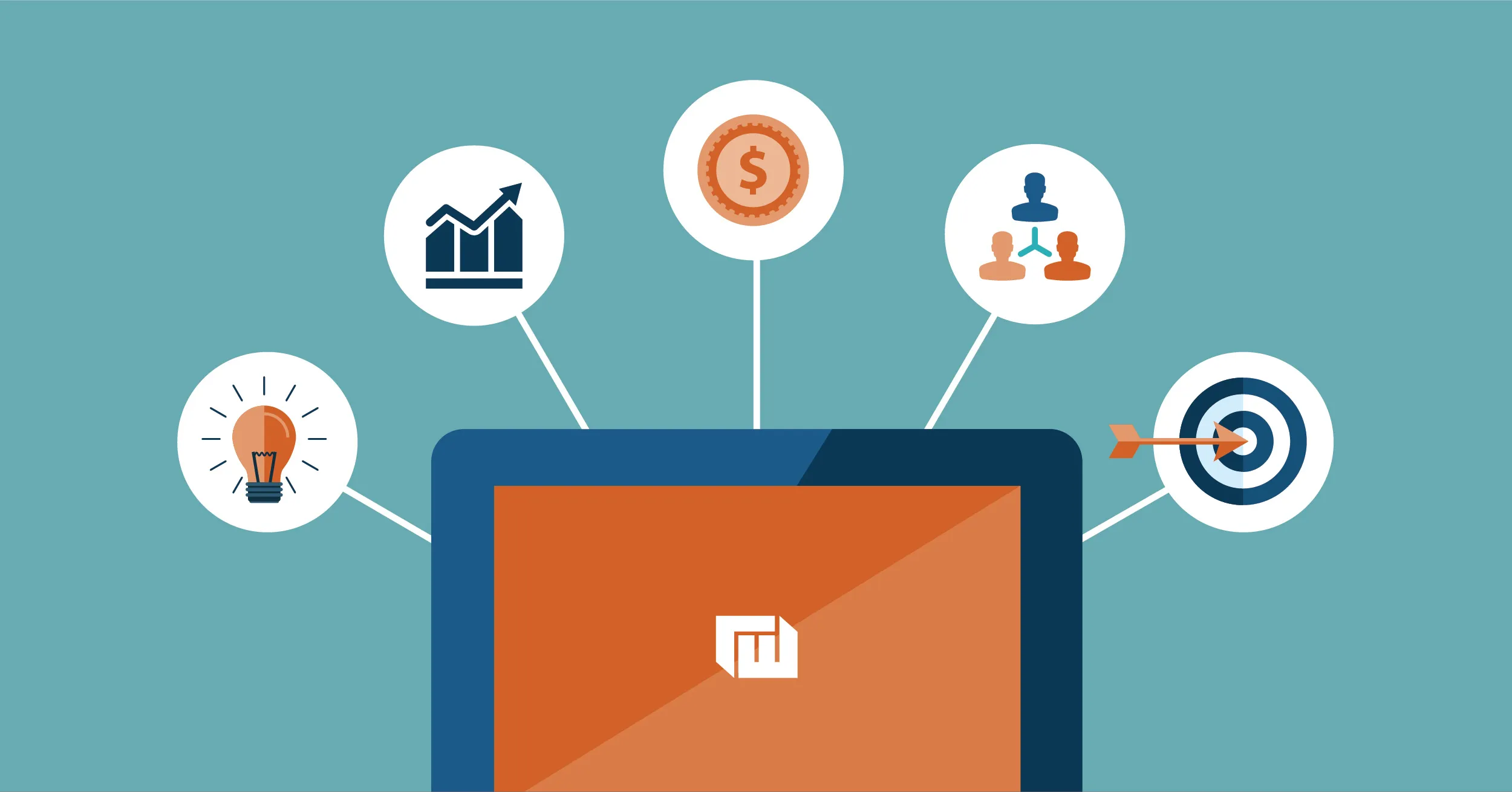
Conversion Rate Optimization (CRO)
It’s not enough to simply attract traffic to your site—you must also convert that traffic into paying customers. Conversion Rate Optimization (CRO) is the art and science of turning visitors into buyers. You can significantly improve your sales without increasing your marketing spend by analyzing user behavior, reducing friction, and testing different experiences. In this group, we’ll cover 10 powerful CRO strategies that are proven to turn browsers into loyal shoppers.
11. Use Exit-Intent Popups to Capture Leads
When a visitor is about to leave your site, an exit-intent popup can offer them a discount, free shipping, or a freebie in exchange for their email. This strategy helps you retain potential customers and add them to your email funnel. It’s a powerful way to convert lost visitors into subscribers and eventually, buyers.
12. A/B Test Product Pages and CTAs
Run split tests on headlines, product images, CTA buttons, and descriptions to find what works best. Even small tweaks—like changing a button color or repositioning a product image—can increase conversion rates. Continuous testing ensures your site evolves based on actual customer preferences and not just assumptions.
13. Add a Countdown Timer for Limited-Time Offers
Scarcity and urgency drive action. Use countdown timers on product pages or at checkout to show how much time is left on a sale or free shipping offer. This adds pressure and encourages immediate action, reducing cart abandonment. Just make sure the urgency is real and not manipulative.
14. Show Inventory Count to Create Scarcity
Display low stock levels like “Only 3 left in stock” to increase urgency. Shoppers are more likely to act when they feel they might miss out. FOMO (Fear of Missing Out) is a powerful psychological trigger that drives conversions, especially during peak sales periods.
15. Enable One-Click Checkout
Reduce the number of steps required to purchase by offering one-click checkout, especially for returning customers. This minimizes friction and dramatically improves mobile conversions. Platforms like Shopify and Amazon have successfully used this strategy to increase impulse buying.
16. Create a Clear Value Proposition
Within seconds of landing on your site, visitors should know what you offer, who it’s for, and why it matters. Place your value proposition clearly on the homepage and above the fold. This messaging should focus on the benefits to the buyer, not just product features.
17. Add Live Chat or AI Chatbots
Answer questions in real-time with live chat or chatbots. Customers who get quick answers are more likely to complete a purchase. Plus, it reduces customer support tickets and builds trust, especially for first-time buyers. Use chatbots to offer instant help 24/7 for common questions.
18. Use Cart Abandonment Emails
Follow up with customers who leave items in their cart. Send personalized reminders with product links, discount codes, or testimonials to recover lost sales. Many brands recover up to 20-30% of abandoned carts with timely, well-crafted emails.
19. Display Money-Back Guarantees
Risk-reversal is key to closing sales. Prominently display satisfaction guarantees, easy returns, or 30-day money-back policies to reduce buying hesitation. Customers feel safer when they know they can get their money back if something goes wrong.
20. Optimize for Trust with Transparent Pricing
Hidden fees at checkout are a conversion killer. Display total costs, taxes, and shipping fees clearly from the beginning. Transparency builds trust and ensures that customers are not surprised or frustrated at checkout, leading to higher completion rates.
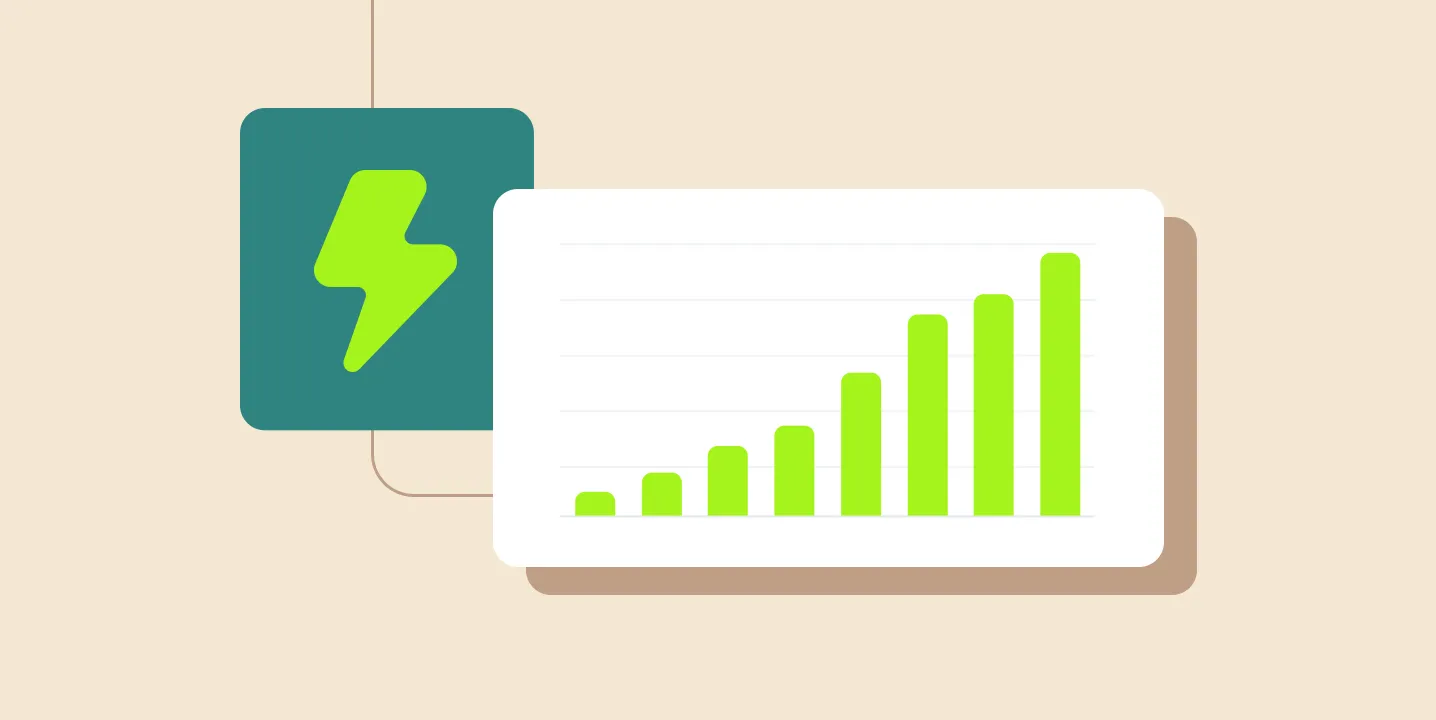
Email Marketing & Customer Retention Strategies
Email remains one of the most cost-effective and profitable channels for eCommerce businesses. Unlike social media or search engines, your email list is an asset you control. But email marketing isn’t just about sending newsletters—it’s about building relationships, nurturing trust, and turning one-time buyers into loyal repeat customers. This group focuses on 10 essential strategies that help you use email to boost conversions, build customer loyalty, and keep your brand top-of-mind.
21. Segment Your Email List by Behavior and Interest
Don’t send the same email to everyone. Segment your list by purchase history, browsing behavior, location, and interests. Personalized emails increase open rates, click-throughs, and conversions. For example, you can target VIP customers with exclusive offers or re-engage inactive users with win-back campaigns.
22. Automate Abandoned Cart Emails
One of the most effective email campaigns is the abandoned cart recovery series. Send a series of 2-3 reminder emails within 24–48 hours of cart abandonment. Include product images, testimonials, or discounts. Automation ensures you capture revenue without lifting a finger every time.
23. Send Post-Purchase Follow-Up Emails
After a customer buys, follow up with thank-you emails, order tracking, and product usage tips. A few days later, ask for reviews or offer complementary products. These touchpoints increase satisfaction, build loyalty, and encourage repeat purchases.
24. Offer Loyalty Rewards and Referral Incentives
Create a rewards program that incentivizes repeat purchases—points, discounts, or freebies. Combine this with a referral program that rewards customers for inviting friends. These strategies boost customer lifetime value and turn happy buyers into brand advocates.
25. Promote Flash Sales and Seasonal Offers
Use your email list to create urgency around limited-time promotions. Design attractive banners, countdowns, and copy that highlight scarcity and deadlines. Flash sales drive fast action and help move inventory quickly, especially during holidays or slow periods.
26. Deliver Exclusive Subscriber-Only Discounts
Reward your email subscribers with early access or exclusive coupon codes. Let them feel like insiders. This boosts loyalty and reduces the likelihood of unsubscribing. Use personalization to tailor the offer to their past behavior or preferences.
27. Showcase New Arrivals and Product Launches
Keep your list excited with sneak peeks, product announcements, and early access. This is a great opportunity to build hype and generate pre-sales, especially if you’re launching something highly anticipated. Tease the drop over multiple emails for added engagement.
28. Conduct Surveys and Collect Feedback
Ask customers how you’re doing with short surveys in your emails. Use their insights to improve product offerings, customer service, or your website experience. People appreciate being heard, and feedback helps you optimize for future success.
29. Include User-Generated Content in Emails
Showcase real customer photos, testimonials, or reviews in your newsletters. This builds credibility and increases engagement. People trust other buyers more than brands—leverage that social proof in your email campaigns.
30. Maintain Consistent Brand Voice and Design
Your emails should reflect your brand’s personality, tone, and visuals consistently. Whether it’s fun and quirky or clean and professional, brand consistency builds familiarity and trust, increasing the chance of conversions every time your emails hit their inbox.

Paid Advertising & Customer Acquisition Strategies
No matter how optimized your site is, if no one visits, you’re not going to make sales. That’s where paid advertising comes into play. Whether you’re just launching or scaling aggressively, paid ads are an efficient way to drive targeted traffic, grow awareness, and attract high-converting customers. But to get the most out of your ad spend, you need the right strategy. This group covers 10 paid advertising tactics that will help you scale your eCommerce store while maintaining a strong return on investment (ROI).
31. Launch Google Shopping Campaigns
Google Shopping ads display your products right at the top of search results with image, price, and ratings. These ads attract high-intent buyers who are ready to purchase. Make sure your product feed is optimized, and you’re using negative keywords to reduce wasted spend.
32. Run Dynamic Facebook and Instagram Retargeting Ads
People rarely buy on their first visit. Use Meta’s Dynamic Product Ads to retarget users who browsed or added products to their cart. Show them the exact product they were viewing and use scarcity, testimonials, or discounts to bring them back and complete the purchase.
33. Use Lookalike Audiences for Scaling
Create lookalike audiences based on your existing customer data—email list, top purchasers, or page engagers. These audiences help you reach new but similar users likely to convert, effectively increasing your ad reach with minimal guesswork.
34. Optimize Ad Creatives for Each Platform
Don’t use one-size-fits-all creatives across channels. What works on TikTok may not work on Pinterest or Google. Tailor your messaging, visuals, and call-to-actions based on user intent and platform behavior. Native-style creatives perform better and drive lower CPMs.
35. A/B Test Headlines, Creatives, and Audiences
Never run just one version of an ad. Split test different headlines, images, video formats, CTAs, and even audiences. The data will reveal what resonates most and helps you scale winners while cutting out underperforming variations.
36. Set Up Conversion Tracking Properly
To make smart decisions, you need accurate data. Use tools like Meta Pixel, Google Tag Manager, and Enhanced Ecommerce to track purchases, cart value, and funnel steps. This ensures you’re optimizing for real sales—not just clicks or traffic.
37. Invest in Influencer Whitelisting Campaigns
Partner with influencers and run ads under their handle instead of your brand’s. This technique—called whitelisting—boosts credibility and CTR since the content looks organic, not sponsored. Combine influencer trust with your ad budget for massive reach.
38. Try YouTube Pre-Roll Ads for Product Education
YouTube is perfect for longer, educational content. Use pre-roll ads (skippable after 5 seconds) to demonstrate product use, highlight features, or share testimonials. These drive brand awareness, especially for high-consideration or technical products.
39. Create Keyword-Specific Landing Pages for Google Ads
Sending PPC traffic to your homepage is a wasted opportunity. Build targeted landing pages that match the user’s keyword intent with matching headlines, product benefits, and CTAs. Landing page relevance improves Quality Score and lowers cost per click (CPC).
40. Monitor Ad Performance and Adjust Budgets Weekly
Don’t “set and forget” your ads. Review performance weekly and shift budget toward top-performing campaigns. Look at metrics like ROAS, conversion rate, and AOV to make smart scaling decisions. Even a 10% optimization can dramatically boost profits.

Social Media Growth & Influencer Marketing
In today’s digital-first world, your eCommerce brand lives or dies by how it shows up on social media. Platforms like Instagram, TikTok, Facebook, and Pinterest offer endless opportunities for organic and viral growth. Combine that with the power of influencer marketing, and you’ve got a scalable way to build trust, showcase products, and drive continuous traffic and sales. In this group, we’ll explore 10 strategies to grow your brand’s presence, build community, and tap into the credibility of creators.
41. Post Consistently with a Content Calendar
Don’t wing your social media posts. Plan content weekly or monthly with themes like product highlights, behind-the-scenes looks, user reviews, and holiday promotions. A content calendar ensures consistent visibility and maintains audience engagement across platforms.
42. Collaborate with Micro-Influencers for Authenticity
Micro-influencers (1K–100K followers) often have high engagement and niche audiences. Partner with them for UGC (user-generated content), testimonials, and reviews. Their recommendations carry weight and cost less than mega-influencers, making this a smart move for ROI.
43. Create Shoppable Instagram & Facebook Posts
Turn social posts into sales channels by tagging products in photos and videos. Platforms like Meta Shop and Shopify integrations let users browse and buy without ever leaving the app, reducing friction and boosting conversions.
44. Use TikTok to Go Viral with Challenges or Tutorials
TikTok’s algorithm rewards entertaining, raw, and trend-driven content. Share behind-the-scenes, unboxings, how-tos, or start a challenge featuring your product. Viral content on TikTok can generate massive brand awareness and organic reach overnight.
45. Run Instagram Story Polls and Questions
Engage followers directly through interactive tools. Use polls, sliders, and question boxes to gather feedback, launch sneak peeks, or choose the next product color. This builds connection and boosts your algorithm presence.
46. Repurpose UGC as Ads and Organic Posts
Encourage customers to share photos of your product with a branded hashtag. Then reshare this content on your feed or run it as ads. UGC builds trust, shows real-world use, and gives you free content to work with.
47. Go Live for Product Drops and Q&A
Use Instagram Live, TikTok Live, or Facebook Live to announce new releases, demo products, or answer customer questions in real time. Live sessions humanize your brand and create urgency, especially for new drops.
48. Use Influencer Giveaway Collaborations to Expand Reach
Partner with influencers to run a giveaway—offer your product in exchange for follows, likes, or tags. This expands your reach, grows your list, and drives a burst of targeted engagement from new followers.
49. Share Behind-the-Scenes Content to Build Connection
People love seeing what happens behind the brand—how products are made, who’s on the team, or how you package orders. This content adds authenticity, builds transparency, and strengthens customer loyalty.
50. Monitor Social Insights to Double Down on What Works
Use Instagram Insights, TikTok Analytics, and Facebook Metrics to track engagement, follower growth, and best-performing content. Let data guide your strategy so you’re not just posting blindly, but optimizing for what your audience loves.
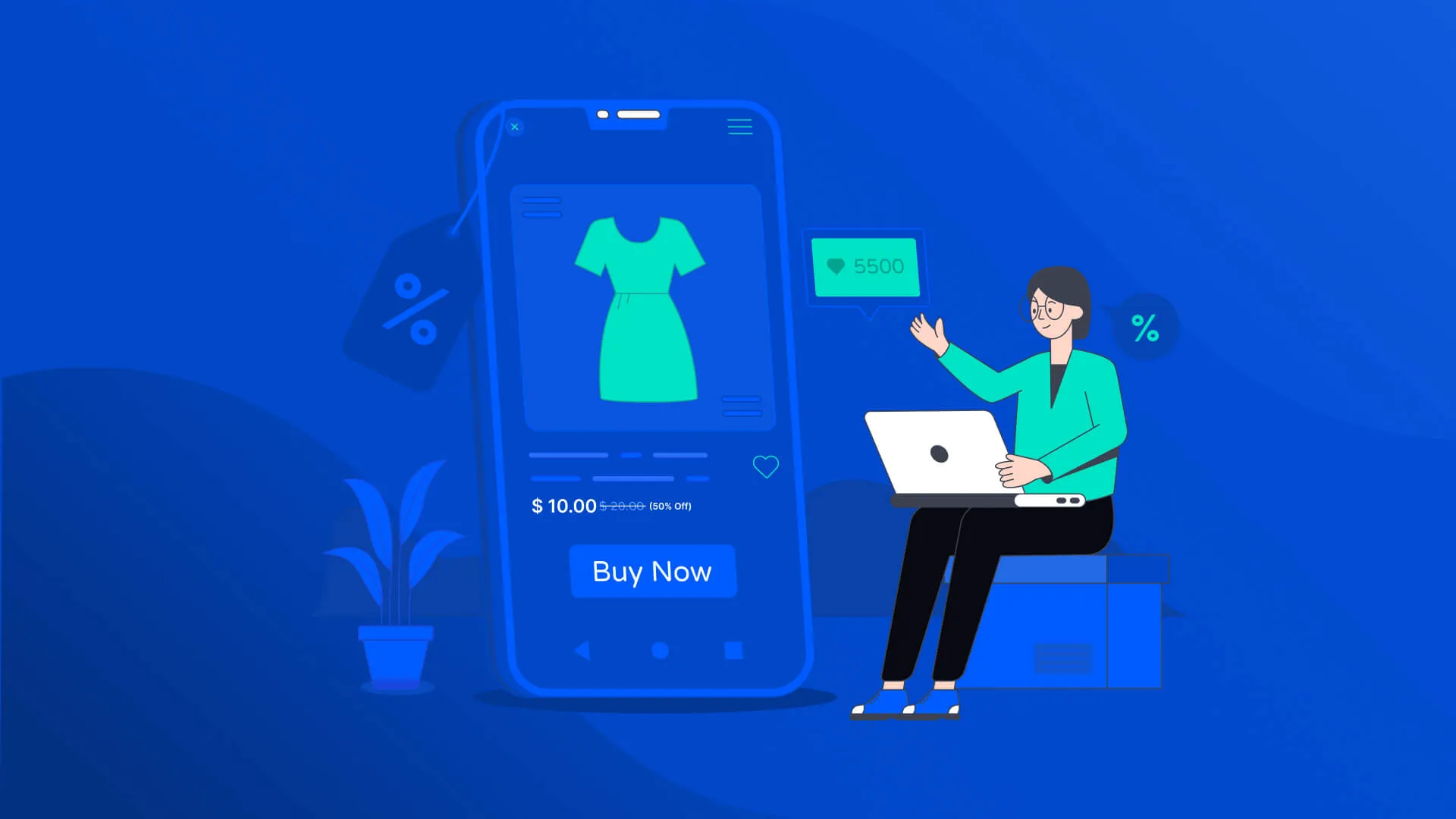
Branding & Community Building Strategies
In a market overflowing with options, what truly sets successful eCommerce brands apart is their identity, voice, and the community they build around their products. Branding is no longer just about logos and color palettes—it’s about the emotions you evoke, the stories you tell, and how your customers feel about you. This group focuses on strategies that help you turn one-time buyers into loyal brand ambassadors who don’t just shop—but belong.
51. Define and Document Your Brand Voice
Create clear guidelines for your brand’s tone, language, and personality. Are you witty and casual or formal and professional? A well-defined voice ensures that your messaging stays consistent across emails, ads, and social media, building brand recognition and trust.
52. Create a Mission Statement That Resonates
Why do you exist beyond just selling products? Share your mission and values clearly on your website and marketing materials. When your brand stands for something—sustainability, inclusivity, empowerment—it connects deeply with like-minded customers.
53. Develop a Branded Hashtag for UGC
Encourage customers to use a unique hashtag when sharing your products on social media. Highlight their content regularly. This boosts social proof, community participation, and brand virality with authentic visibility.
54. Build a Private Facebook Group or Discord Channel
Create a members-only space where customers can connect with you and each other. Use it to drop exclusive offers, get product feedback, or offer sneak peeks. Community increases retention and brand loyalty as customers feel like insiders.
55. Highlight Customer Stories on Your Website
Showcase real users with interviews, case studies, or “customer of the month” features. Their stories give new buyers emotional connections and make your brand relatable. Storytelling sells more than specs ever will.
56. Collaborate with Aligned Brands for Co-Marketing
Partner with non-competing brands that share your values or customer base. Run co-branded campaigns or bundle products. This gives you cross-exposure and credibility, expanding your audience through association.
57. Create a Loyalty Program with Tiered Rewards
Design a reward system where customers earn points for purchases, referrals, reviews, and social shares. Offer different reward levels. Loyalty programs increase lifetime value and repeat purchases while reinforcing your brand ethos.
58. Celebrate Milestones and Holidays with Customers
Send emails or social shout-outs for customer anniversaries, birthdays, or major life events. Celebrate your brand’s own milestones publicly. This human touch deepens relationships and keeps your brand top of mind.
59. Invest in Quality Packaging That Tells a Story
Don’t ship your product in a generic brown box. Branded, eco-friendly, and personalized packaging makes a lasting impression and encourages unboxing shares. The post-purchase experience is where brand magic happens.
60. Stay True to Your Brand Values, Always
Whether you’re navigating a public issue or responding to feedback, make sure your actions align with your core values. Brands that stay authentic—even when it’s difficult—earn deeper loyalty and long-term support.
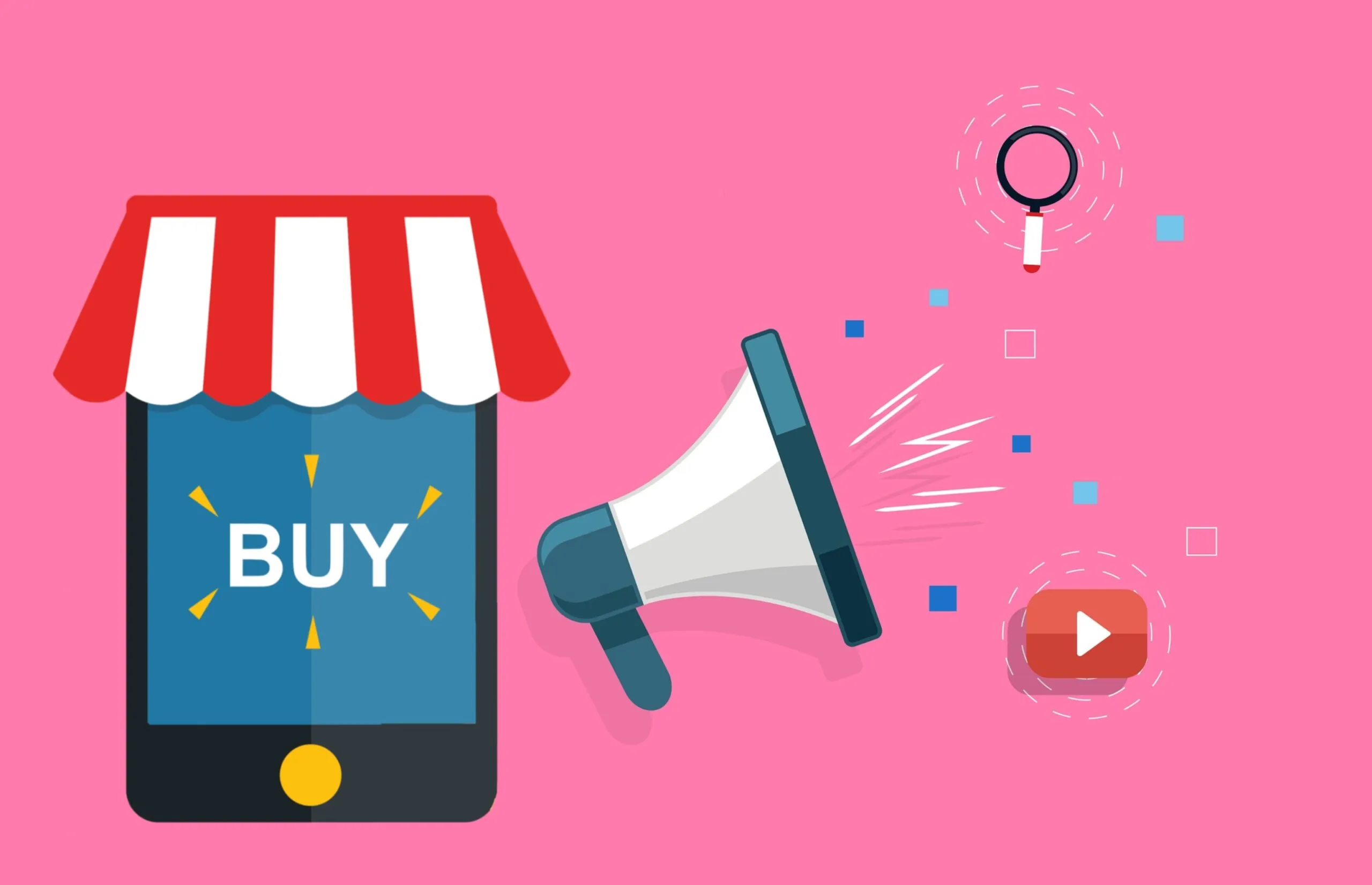
Customer Experience & Post-Sale Engagement Strategies
Many businesses pour all their energy into acquiring customers—but what happens after the sale is just as important. Post-purchase experiences are where loyalty is built, reviews are earned, and customers are turned into lifelong fans. Focusing on customer experience and engagement after checkout not only boosts repeat sales but also reduces churn and increases referrals. In this group, we’ll look at 10 smart ways to elevate your customer experience and build lasting relationships.
61. Send Personalized Order Confirmation and Thank-You Emails
Make your confirmation emails feel like a warm welcome, not just a receipt. Personalize the message with their name, purchased product, and maybe a discount code or thank-you video. This small gesture sets a positive tone and builds emotional connection right after purchase.
62. Provide Real-Time Order Tracking
Give your customers peace of mind by offering real-time tracking updates via email or SMS. Include clear delivery windows, tracking numbers, and carrier details. A transparent delivery process reduces anxiety and increases trust with your brand.
63. Offer Unboxing Experiences That Delight
Packaging matters. Add personalized notes, free samples, stickers, or QR codes linking to bonus content. These moments turn buyers into promoters—an unforgettable unboxing experience often leads to social shares and word-of-mouth referrals.
64. Ask for Feedback and Product Reviews Promptly
Send review request emails a few days after delivery. Make it easy with one-click review buttons and mobile-friendly forms. Incentivize honest feedback with a discount on their next purchase. More reviews equal more trust for future buyers.
65. Implement a Hassle-Free Returns Process
Nothing kills trust like a complicated return policy. Make yours clear, simple, and friendly. Offer free returns, prepaid labels, or return portals. A smooth returns process shows you value customer satisfaction more than just sales.
66. Upsell and Cross-Sell After Purchase
Use post-purchase emails or thank-you pages to suggest complementary products or accessories. Include bundle deals or “people also bought” items. This subtle upsell approach increases average order value without disrupting the customer experience.
67. Create a Post-Purchase Welcome Series
Don’t stop at one email. Build a 3–5 email automation series that educates customers about the product, tells your brand story, and invites them to your community or loyalty program. This keeps them engaged and turns one-time buyers into long-term customers.
68. Provide Self-Service Support Resources
Set up a help center with FAQs, video tutorials, and product care guides. Empower customers to solve simple issues themselves. This reduces support tickets and creates a smoother customer journey after the sale.
69. Offer Refill Reminders or Subscription Options
If you sell consumables or time-sensitive products, send reminders when it’s time to reorder. Offer an opt-in subscription plan for convenience. This boosts retention and ensures recurring revenue for your store.
70. Follow Up with a Customer Satisfaction Survey
Post-delivery surveys show customers you care about their experience and are open to improvement. Ask about product satisfaction, delivery speed, and overall service. Use their insights to optimize operations. Listening creates loyalty.

Data, Analytics & Performance Optimization Strategies
In eCommerce, every click, scroll, and purchase tells a story. But without proper tracking and analysis, you’re flying blind. Data-driven decisions are the backbone of scalable success, helping you understand your customers, refine your strategies, and uncover hidden opportunities. This group focuses on strategies that will help you track performance, improve efficiency, and make smarter growth decisions using data and analytics.
71. Set Up Google Analytics 4 with Ecommerce Tracking
If you’re not tracking user behavior, you’re guessing. GA4 allows you to monitor key metrics like conversion rate, average order value, and cart abandonment. Use enhanced eCommerce tracking to understand the entire customer journey from click to checkout.
72. Use Heatmaps to Analyze User Behavior
Tools like Hotjar or Crazy Egg help you visualize where users click, scroll, and drop off. Heatmaps reveal UX issues, confusing layouts, or CTA blind spots. This empirical feedback helps you improve site navigation and boost conversions.
73. Track Funnel Drop-Offs and Conversion Paths
Identify exactly where users are exiting your funnel—product page, cart, or checkout—and optimize those steps. Use analytics to isolate friction points and streamline the buying process, turning more visits into revenue.
74. Monitor Customer Lifetime Value (CLV)
CLV tells you how much revenue a customer brings over their entire relationship with your brand. Track it by cohort and customer segment. Brands that know their CLV can make smarter marketing and pricing decisions with confidence.
75. Implement UTM Parameters for Campaign Tracking
Tag every ad, email, or influencer link with UTM codes. This lets you track which campaigns drive sales and which don’t. You’ll stop wasting money on ineffective channels and double down on what works.
76. Use Customer Surveys to Collect Qualitative Data
Sometimes the best insights don’t come from dashboards—they come from people. Use post-purchase or exit surveys to learn why customers didn’t buy or what they love about your product. This adds human context to hard numbers.
77. Run Monthly Reports on KPIs
Set key performance indicators (KPIs) such as revenue, conversion rate, traffic sources, ROAS, and churn. Review them monthly (or weekly) to identify trends, seasonal impacts, or sudden drops. Consistent reporting is the foundation of informed strategy.
78. Use A/B Testing Tools Across the Funnel
Don’t just test headlines or buttons. Experiment with entire landing pages, navigation flows, or checkout processes. Use tools like Google Optimize or VWO. Small wins compound over time, making incremental optimization a long-term growth driver.
79. Segment Your Data for Better Insights
Avoid generalizations—break down your analytics by traffic source, device type, geography, or customer status. Segmentation uncovers granular insights that can inform content, ads, pricing, and more.
80. Use Dashboards to Visualize Business Health in Real-Time
Create a dashboard using tools like Databox, Klipfolio, or even Google Data Studio. Track sales, refunds, traffic, and top SKUs in real-time. This helps you react quickly and keep your team aligned with daily performance metrics.

Automation & Operational Efficiency Strategies
As your eCommerce business grows, manual processes can start to slow you down. To scale sustainably, you need systems that reduce time-consuming tasks, improve accuracy, and boost productivity without hiring a massive team. That’s where automation and operational efficiency come in. In this group, we’ll explore 10 strategies to help you work smarter, serve faster, and grow bigger with less overhead.
81. Automate Order Fulfillment with 3PL Services
Third-party logistics (3PL) providers like ShipBob or Fulfillment by Amazon can handle warehousing, packing, and shipping for you. This reduces in-house workload and ensures faster delivery times, better tracking, and reduced shipping errors.
82. Set Up Automated Email Sequences for Every Stage
Create flows for cart abandonment, post-purchase, win-backs, and loyalty nurture sequences. Tools like Klaviyo or Mailchimp let you build powerful automations that drive revenue while you sleep.
83. Use Inventory Management Software to Avoid Stockouts
Solutions like TradeGecko, Skubana, or Shopify apps help you track inventory in real time, automate reorders, and forecast demand. Prevent overselling or running out of stock during peak periods. More accurate inventory equals fewer lost sales.
84. Integrate Customer Service Chatbots
Automate FAQs, order tracking, and general inquiries using tools like Gorgias or Tidio. Chatbots can handle 70%+ of basic support, freeing your team to focus on complex issues. Faster responses = happier customers.
85. Batch Content Creation and Schedule Ahead
Use tools like Later, Buffer, or Hootsuite to schedule a week or month’s worth of content in one sitting. This reduces stress, ensures consistency, and helps you stay active on social media without daily effort.
86. Automate Product Feed Updates Across Channels
If you sell on multiple platforms (e.g., Shopify, Amazon, Google, Facebook), use feed management tools to sync prices, inventory, and descriptions. This avoids errors and keeps your listings consistent. One update, everywhere at once.
87. Implement Auto-Tagging for Orders and Customers
Use rules to tag customers based on purchase behavior, location, or product interest. Then trigger personalized emails or loyalty offers automatically. This increases segmentation accuracy and enhances targeting.
88. Use Automation in Accounting and Tax Management
Sync your store with tools like QuickBooks, Xero, or Avalara. Automate bookkeeping, invoice generation, and tax compliance. It saves hours of admin work and reduces costly errors during tax season.
89. Streamline Product Returns with Return Portals
Use apps like Loop or AfterShip Returns to automate return approvals, create shipping labels, and track reverse logistics. A smooth return process builds trust and saves your support team time.
90. Set Automated Alerts for Low Inventory or Sales Drops
Configure alerts in your analytics tools to notify you of low-stock levels or sudden dips in conversion rate. These early warnings help you react quickly and prevent revenue loss before it becomes a bigger issue.
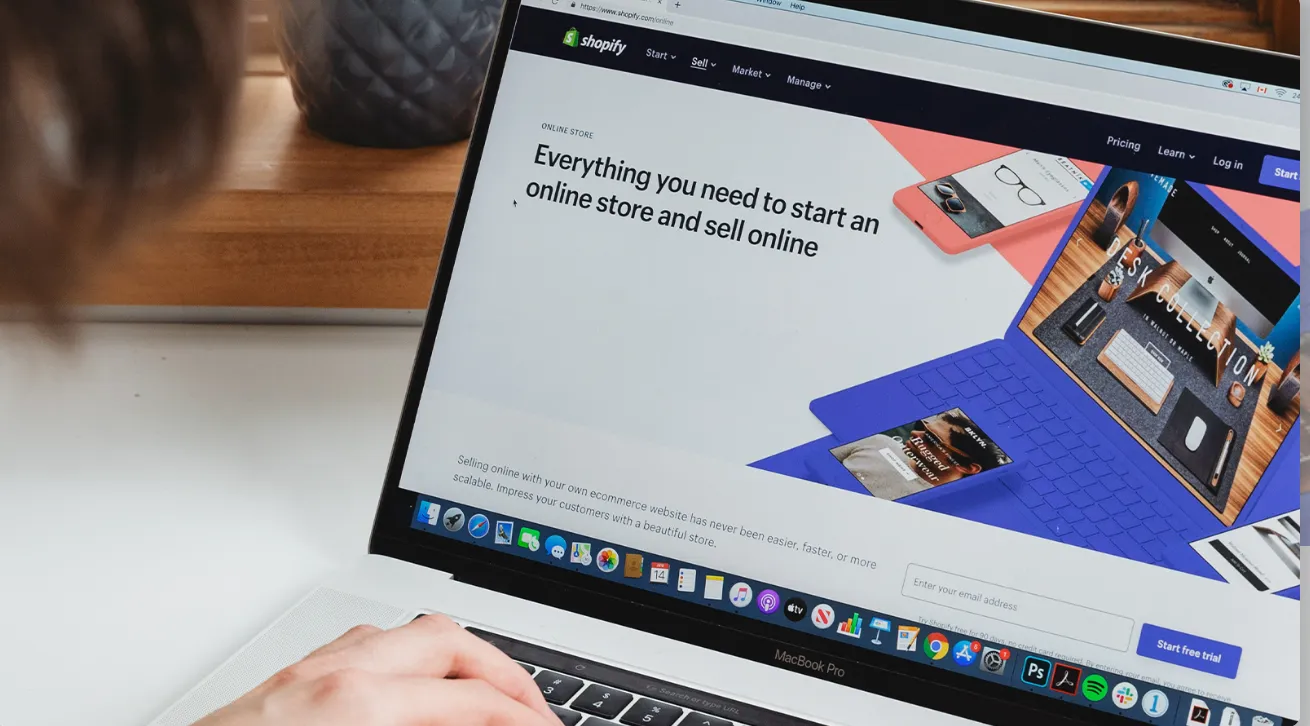
Sustainability & Ethical eCommerce Strategies
Today’s consumers are increasingly conscious about the impact of their purchases. They want to buy from brands that not only deliver great products but also care about the planet and society. Incorporating sustainability into your eCommerce strategy isn’t just a moral choice—it’s a competitive advantage. This group covers strategies that help your store reduce its environmental footprint, promote ethical practices, and attract loyal, conscious consumers.
91. Offer Eco-Friendly Packaging Options
Switch to recyclable, compostable, or reusable packaging materials. Include messaging in your unboxing experience to educate customers about your sustainability efforts. Green packaging builds trust and appeals to environmentally-conscious buyers.
92. Highlight Ethical Sourcing in Product Descriptions
Be transparent about where and how your products are made. Showcase partnerships with ethical manufacturers, fair-trade certifications, or artisan communities. Consumers want to support brands that align with their values.
93. Introduce a Carbon Offset Program at Checkout
Allow customers to voluntarily add a small fee to offset their order’s carbon footprint. Partner with organizations like Ecologi or CarbonFund. This initiative shows responsibility and lets customers contribute to positive change.
94. Launch a Recycling or Product Return Program
Encourage customers to return used products or packaging for recycling or reuse. Offer store credit as an incentive. This builds a circular economy model and strengthens your brand’s environmental credibility.
95. Reduce Overproduction with On-Demand or Pre-Order Models
Avoid inventory waste by offering made-to-order or pre-sale products. This not only lowers operational costs but also minimizes environmental impact and encourages more mindful purchasing.
96. Support a Cause Through Your Sales
Donate a portion of sales to charities or nonprofit organizations related to the environment, education, or social justice. Promote the cause in your branding to create emotional connection and encourage value-based purchases.
97. Share Your Sustainability Journey with Transparency
Publish annual impact reports, sustainability milestones, or behind-the-scenes progress updates. Customers appreciate honesty and love to see brands improving, even if the journey isn’t perfect.
98. Partner with Eco-Conscious Influencers
Collaborate with influencers who promote sustainable lifestyles. Their endorsement carries weight with conscious audiences and amplifies your message authentically.
99. Choose Local Suppliers to Reduce Emissions
Shorten your supply chain by sourcing locally where possible. This supports local economies and cuts down on long-distance shipping, helping you minimize carbon output and improve fulfillment speed.
100. Encourage Digital Receipts and Paperless Billing
Offer email receipts instead of printed ones. Not only does it reduce paper waste, but it also creates another opportunity to capture email subscribers for future engagement.
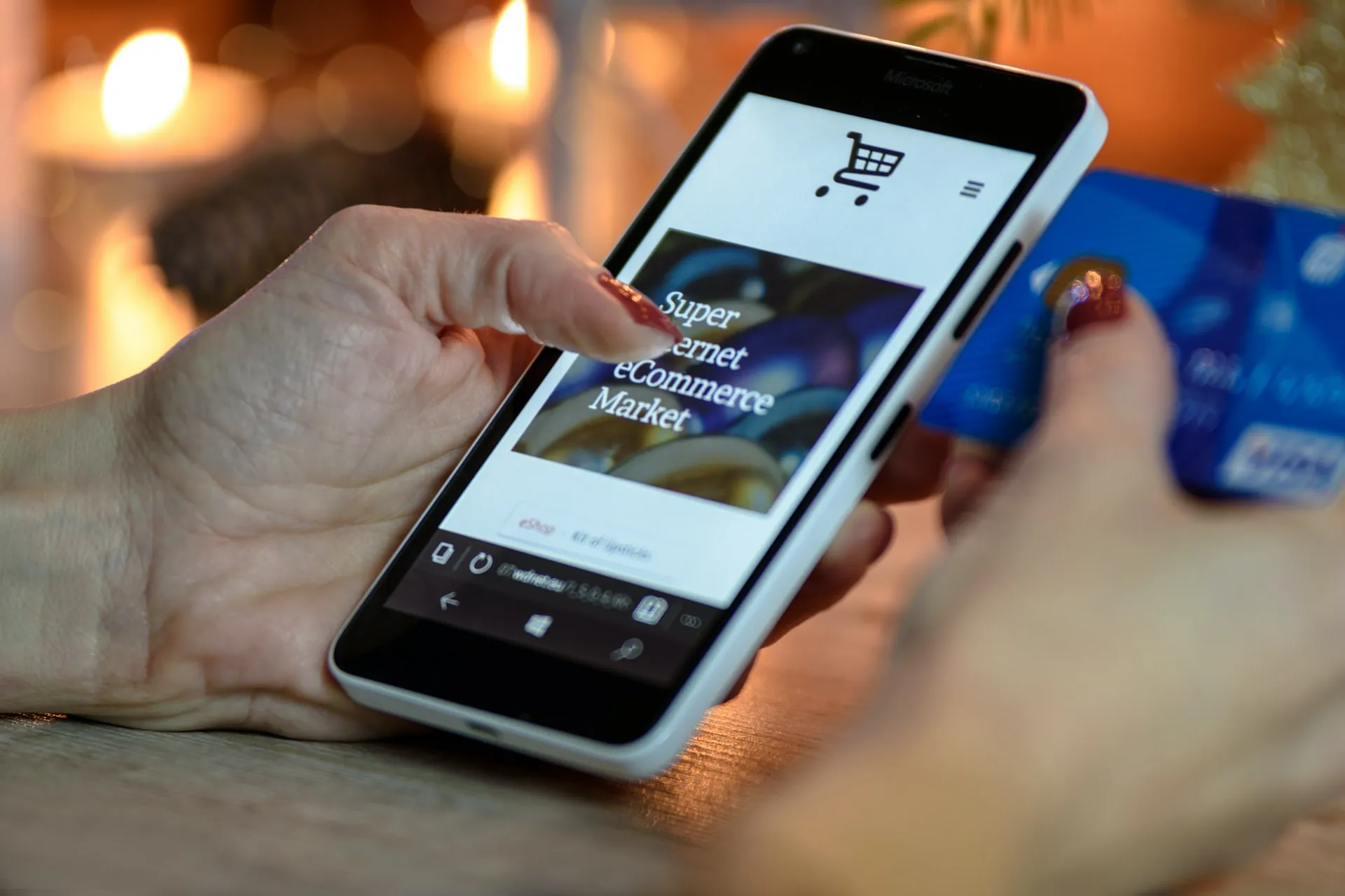
Future-Proofing & Emerging eCommerce Trends
The eCommerce world is evolving at lightning speed. New tools, technologies, and expectations are reshaping how we sell and how customers shop. If you want to stay ahead, you must be ready to adapt, innovate, and experiment with emerging strategies. This final group will help you future-proof your store and seize opportunities before your competitors do.
101. Explore Augmented Reality (AR) Shopping Tools
Let customers virtually “try on” products or place them in their environment via AR. Platforms like Shopify AR or apps like Wanna Kicks increase engagement and reduce return rates by improving buyer confidence.
102. Use AI for Personalized Shopping Experiences
Leverage artificial intelligence tools to recommend products based on browsing behavior, previous purchases, and preferences. This hyper-personalization drives conversions and creates a tailored customer journey.
103. Accept Cryptocurrency Payments
As crypto adoption rises, consider accepting Bitcoin, Ethereum, or stablecoins at checkout. Use payment gateways like BitPay or Coinbase Commerce. This appeals to tech-savvy audiences and gives you an innovative edge.
104. Build an SMS Marketing List
SMS open rates can exceed 90%. Send exclusive offers, restock alerts, or shipping updates via text. Just be respectful and get consent. When done right, SMS marketing is one of the highest-converting channels.
105. Launch a Mobile Shopping App
Create a branded mobile app for your store. Apps allow push notifications, loyalty integrations, and faster shopping experiences, especially for returning customers. This increases retention and lifetime value.
106. Create Personalized Video Content
Instead of static product pages, experiment with dynamic video—personalized welcome messages, product how-tos, or customer testimonials. Video boosts engagement and builds stronger connections with your brand.
107. Offer Voice Search & Smart Device Compatibility
As smart speakers grow, optimize your store for voice search and allow voice-based ordering. It’s an investment in accessibility and convenience for the next generation of shoppers.
108. Gamify the Shopping Experience
Add interactive elements like spin-to-win wheels, reward points, quizzes, or interactive bundles. Gamification makes shopping fun, memorable, and sticky.
109. Tap into Livestream Shopping Events
Host live shopping sessions on Instagram, TikTok, or YouTube. Showcase products in action and offer time-limited deals. Live commerce blends entertainment with impulse purchasing for powerful engagement.
110. Stay Ahead with Trend Tracking and Market Research
Regularly monitor industry trends, emerging platforms, and shifts in buyer behavior. Use tools like TrendHunter, Exploding Topics, or even Reddit to find what’s next before it goes mainstream.
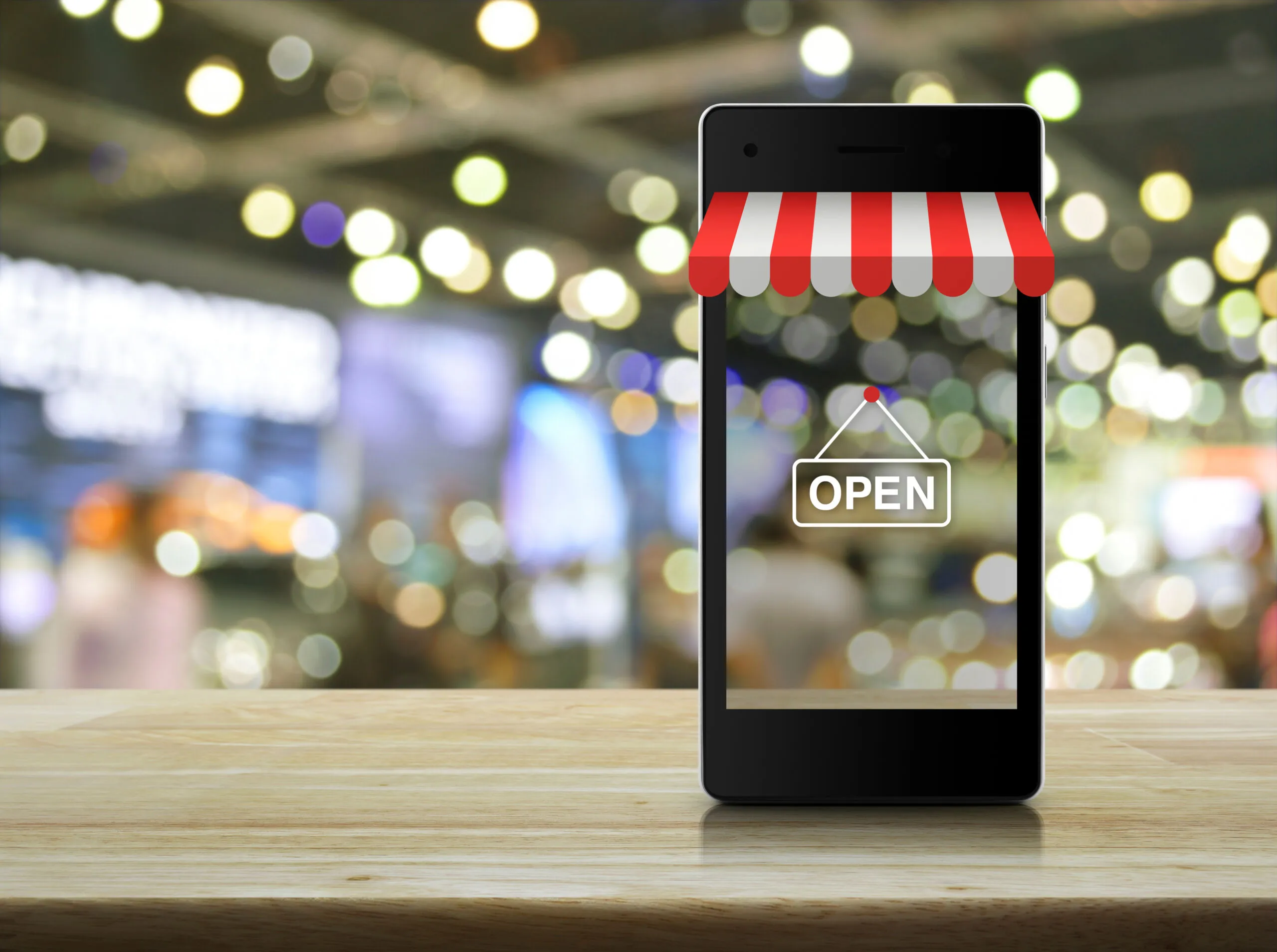
You can now access 100+ actionable, data-driven, and future-ready strategies to boost your eCommerce sales. These strategies span every aspect of your business—from user experience and marketing to fulfillment, automation, and innovation. Whether you’re just starting or managing a multi-million-dollar store, this blueprint equips you to drive revenue, build loyalty, and scale sustainably.
What’s Next?
- Start small. Pick 3–5 strategies and implement them this week.
- Measure impact. Use data and feedback to track results.
- Iterate and grow. Continuously refine, test, and expand your toolkit.
- Lead with value. Build your brand with honesty, purpose, and a passion for your customers.
🛍️ eCommerce is no longer just about selling products—it’s about creating experiences. Use these strategies to transform your store into a community, a movement, and a brand people love to support.

